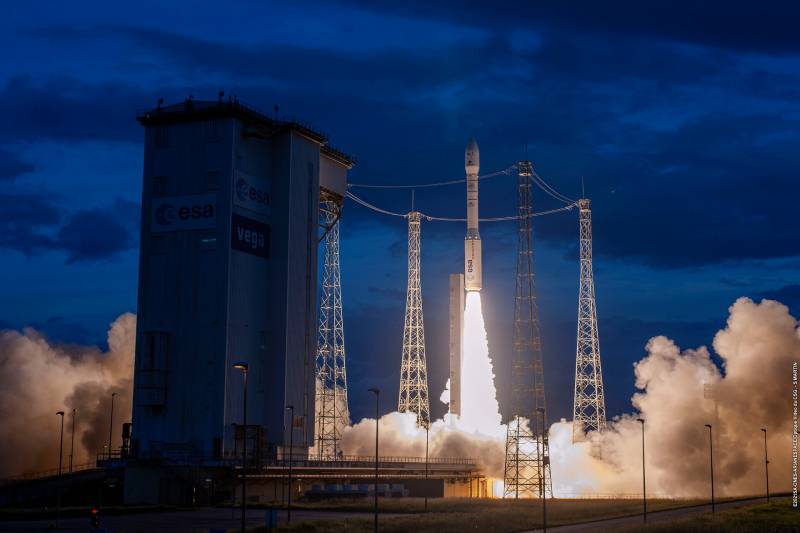On October 8, a Vega rocket accomplished a successful launch, deploying twelve small satellites into orbit. This mission took off from the European spaceport located in Kourou, French Guiana, at 9:36 p.m. Eastern. Initially scheduled for October 6, the launch was postponed in the final minute of the countdown due to a measurement issue slightly exceeding the maximum threshold. Arianespace, the launch service provider, later rescheduled the launch to October 7 but delayed it for another day to conduct additional vehicle checks.
The two primary payloads on this mission were THEOS-2 and FORMOSAT-7R/TRITON, both destined for sun-synchronous orbits at altitudes ranging from 600 to 617 kilometers, approximately 55 minutes after liftoff.
THEOS-2, weighing 417 kilograms, was built by Airbus Defence and Space for Thailand’s Geo-Informatics and Space Technology Development Agency. Its mission is to provide high-resolution imagery, with resolutions of up to 0.5 meters, ensuring service continuity for its predecessor, THEOS-1, which is also an Airbus-built satellite.
FORMOSAT-7R/TRITON, weighing 241 kilograms, was developed and will be operated by the Taiwan Space Agency. This satellite is tasked with collecting radio occultation data from navigation satellites, contributing to improved weather forecasting.
In addition to these primary payloads, the Vega rocket also carried ten secondary payloads in the form of cubesats, ranging in size from 3U to 12U. These cubesats come from various European developers, including those supported by the European Space Agency and European Union, primarily for technology demonstration purposes. These secondary payloads were deployed 1 hour and 44 minutes after liftoff, although Arianespace mentioned that it was still awaiting confirmation of the deployment of two of the cubesats.
Designated VV23 by Arianespace, this launch marked the first mission for the Vega family of rockets since the Vega C’s failure in December 2022 during its second launch. The failure was attributed to the Zefiro 40 motor used as the second stage of the Vega C. In contrast, the original Vega rocket, used for this mission, employs the smaller Zefiro 23 motor as its second stage.
Vega C remains grounded following an anomaly during a static-fire test of the upgraded Zefiro 40 motor in June. The investigation revealed issues with the motor’s nozzle design after replacing its carbon-carbon throat insert to address the cause of the December launch failure.
The European Space Agency (ESA) announced on October 2 that the return to flight of Vega C, originally projected to occur before the end of this year, has been postponed to the fourth quarter of 2024. This delay will provide engineers with the necessary time to implement modifications in the motor and carry out two static-fire tests.
Arianespace stated that the final launch of the original version of Vega is planned for the second quarter of 2024. However, details regarding the customer for this launch and the return to flight of Vega C have not yet been disclosed.
Disclaimer: The views, suggestions, and opinions expressed here are the sole responsibility of the experts. No Atlantic Brief journalist was involved in the writing and production of this article.


